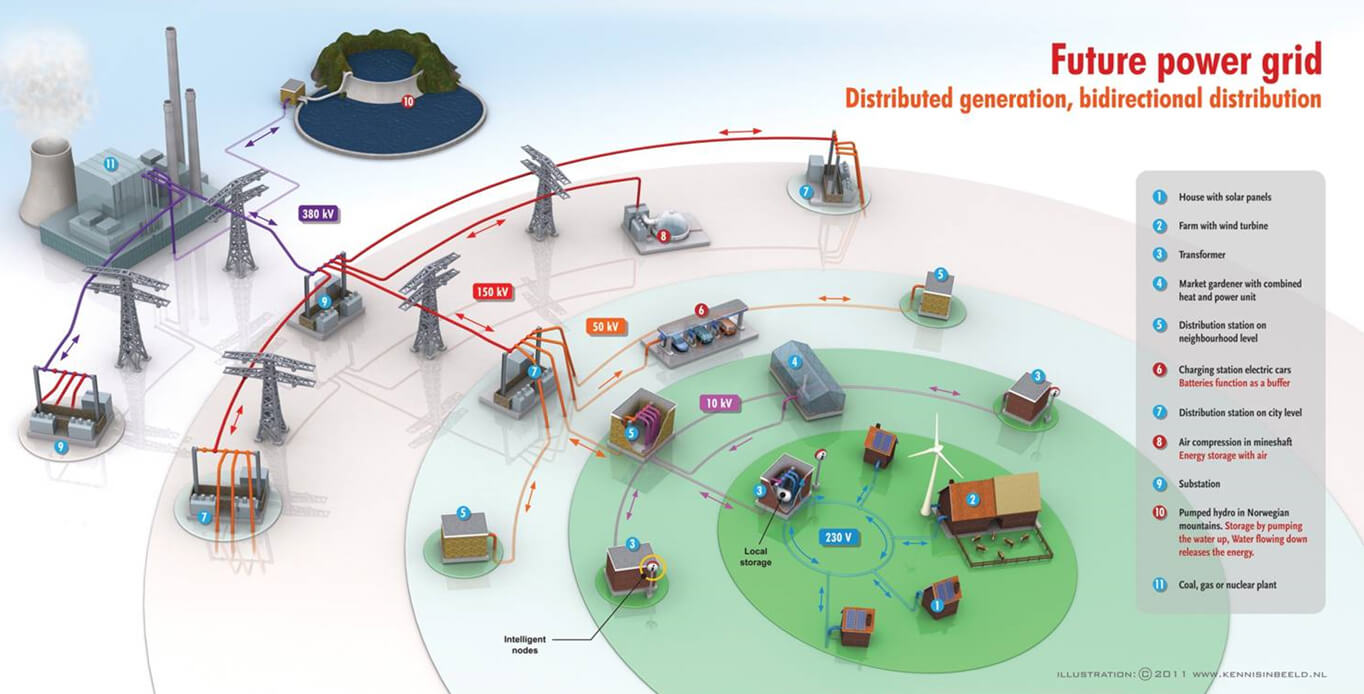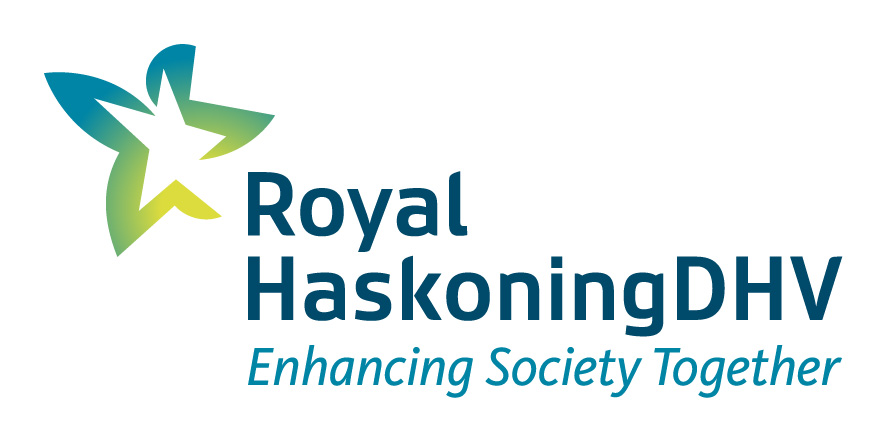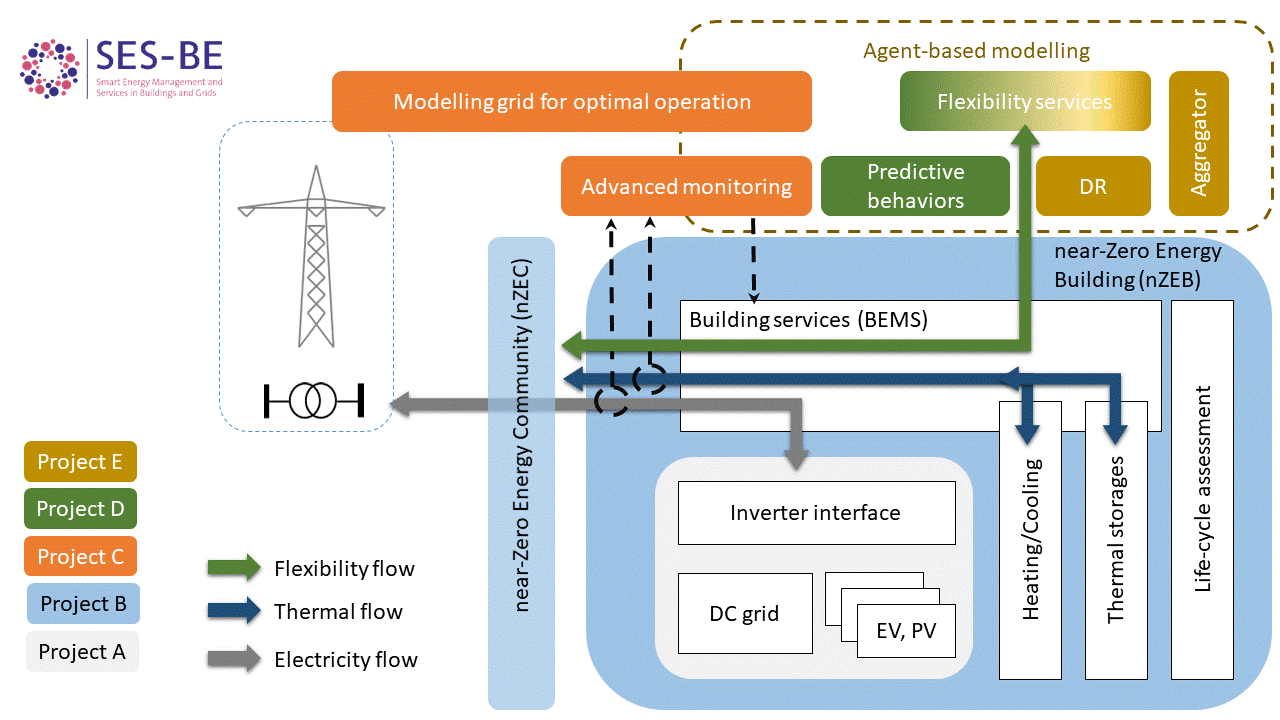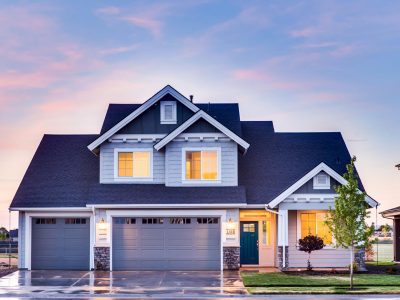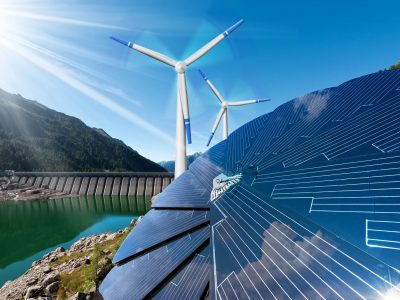Smart Energy Systems in the Built Environment (SES-BE)
Smart Energy Management and Services in Buildings and Grids
Summary of the SES-BE program
A new sustainable energy supply chain is emerging due to increasing penetration of renewable energy sources (RES) like solar and wind, together with new types of appliances such as electric vehicles, heat pumps and other domestic electric usage technologies.
Show more information
By contributing up to one-third of the total consumed energy, buildings have been a major consumer but potentially can offer a lot of flexibility in the way the energy is used, stored and locally produced, and will therefore play a crucial role in this emerging chain with their on-site distributed energy resources (DER). From that point of view the building and its connection to the grid could be seen as a crystallization point of the new energy transition. Development of user-centric building energy management systems will impact significantly energy and value flows within the built environment as part of the smart energy system (SES) while fully integrating the functionalities of the so called Smart Grid. This particularly challenges the design, operation and organization of the future energy supply system to exploit fully the potential of smart buildings and its environment while maintaining system reliability and quality of energy supply.
The current pilot projects for Smart Grids all over the world are being scaled up rapidly. This is also an essential part of the implementation of the Action Plan of Network Operators of the Netherlands. Other examples are the SER Energy Agreement, the Green Deal Smart Energy Cities, the development of the Universal Smart Energy Framework and the setting up of an Integral Test Facility. Such tests and large-scale demonstration projects are essential to reduce the risk of investment and make large-scale technology deployment possible. The long-term impact of the our program concerns practical technological solutions and integrated smart systems for the built environment to address challenges related to a secure and efficient energy supply characterized by large-scale penetration of DER, to be implemented in future demonstration projects.
Our program focuses on the development of management and control systems, the development of emerging hardware technologies to be used in buildings, the ICT-enabled energy services (monitoring and prediction, data mining, market-based and real-time control), as well as technology exploitation via new business models and a realistic simulation environment (modelling lab) for testing entrepreneurship ideas and government policies.
The results of this program are expected to increase energy efficiency for buildings as well as scale-down extensive investments in the energy supply systems. It will create added value by emerging new business models for involved stakeholders including end-users, building owners, and grid operators. Developed projects will strongly facilitate innovation and the concept of smart cities and communities. The research will be carried out in close collaboration with a large number of industrial parties and non-profit organizations.
Unique selling points of the program
- Strong multi-disciplinary team from 3 academic institutions bringing together expertize in electrical engineering, building science, mathematics and policy management.
- Diverse pool of supporting industrial partners and stakeholders, covering all essential domains in the value chain of smart grid and built environment willing to implement the results.
- Coherent structural, operational and institutional innovation, with two-way interactions among research lines ensuring an integrated system-of-systems approach.
- Use of multi-agent systems as enabling software technology, ensuring autonomy and scalability.
- Developed hardware, software, designs and business models are essential inter-operable building blocks of SES, anchored in use cases and leading to best practices and standardization.
Show less information
Our objectives
To accelerate the large-scale deployment of hardware and software technologies. And to enable the integration of solutions required to meet the challenge of smart and sustainable energy systems in the built environment.
Scientific challenges
Explore synergies between built environment and emerging smart grid technologies & applications. Engage active end-user participation. Provide flexibility and efficiency in the whole system. Couple with smart entrepreneurship and policies.
Theme 1
New energy conversion and distribution technologies for smart buildings.
Theme 2
Interactive energy management systems and lifecycle performance & design for energy infrastructures of local communities
Theme 3
Modular Smart Grid Demonstration Platform.
Theme 4
Modeling lab for smart grids, smart policies and smart entrepreneurship.
Project A
Smart Energy System (SES) applications can provide higher flexibility by allowing the engagement of decentralized generation, storage, controllable loads. The goals of project A are to increase the efficiency of the electrical infrastructure in houses and buildings, and to optimize the cost/power efficiency/user-convenience balance of the interfaces between this infrastructure and end applications.
Project B
The transition to a cleaner and sustainable energy infrastructure demands major changes also on the demand-side, particularly in buildings. It is therefore, paramount that the impact of changes in the energy infrastructure on the performance, operation and life-cycle of buildings and its systems be understood.
Project C
This project aims to develop software methods for analyzing large volumes of streaming data and predicting system state. In addition, mathematical models and algorithms for real-time prediction and control of the smart grid are another focal point.
Project D
The main objective of the TU/e PhD sub-project work is to propose a modeling and simulation tool that enables ancillary services from DERs and ensures a stable and efficient operation of active (smart) grids and local energy markets.
Project E
The objective of the project is to create a modelling lab for understanding and shaping the emergence of the smart energy system in the built environment. Using the modelling lab, demand response aggregation and the next generation of district heating will be studied for the electricity part and heating part of the built environment, respectively.
6
Years of research
4
Research themes
5
Projects
9
PhDs and 2 Postdocs

